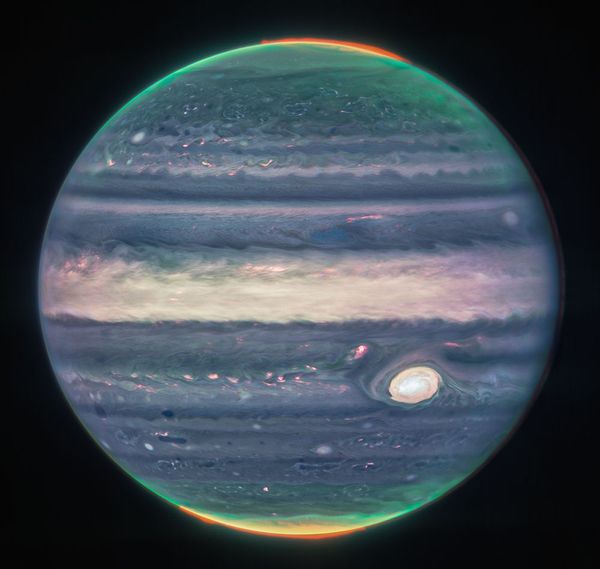
On Tuesday, the European Southern Observatory released a new image that could advance our fundamental understanding of how brand new planets are formed.
Located over 5000 light-years away in the constellation Monoceros, a star named V960 Mon was photographed using the Very Large Telescope's Spectro-Polarimetric High-contrast Exoplanet REsearch (SPHERE) instrument. The image was taken after the onset of a brightness outburst revealing that there's material orbiting it, in what appeared to be a series of intricate spirals extending massive distances.
Intrigued by the spirals, astronomers looked back at observations of the same system previously made with the ALMA telescope. Through an analysis, they concluded that the spiral arms were clumps of dust particles with masses similar to planets — a hint of what was to come.
Philipp Weber, a researcher at the University of Santiago, Chile who led a study published in The Astrophysical Journal Letters about the observation, told Salon the clumps in the spiral are likely "the precursors of planets."
"At this moment, they are just some clouds of dust," Weber said. "But in the future, they might contract and collapse to form a giant planet. This is just one possible outcome, but it's probably the most spectacular one."
In other words, from a human perspective, this image could be depicting the conception of a massive planet, a phenomenon that is still a mystery in the universe. Such a spectacle has been hypothesized as part of some models of planet formation, but this is the first time an observation has actually been made.
"With ALMA, it became apparent that the spiral arms are undergoing fragmentation, resulting in the formation of clumps with masses akin to those of planets," Alice Zurlo, one of the study authors and a researcher at the Universidad Diego Portales, Chile, said in a statement. "This discovery is truly captivating as it marks the very first detection of clumps around a young star that have the potential to give rise to giant planets."

"There are many ideas, many theories of how planets form — in the last 10 years, there have been a lot of good observations," Weber said. "But still today, we don't fully understand every process."
Weber said one of the biggest problems is understanding the scales. For example, how a small, grain-sized clumps can turn into a planet the size of Earth.
"This means that the physics that are involved are quite complicated because it covers a lot of different scales of mass and size," Weber said. "This study is mainly a confirmation that something is possible that people have been hypothesizing about. It gives us observational evidence on this process of gravitational instability."
This observation gives the gravitational instability theory more support as a leading contender for massive, gas planet formation. Weber said it's good to have this confirmation, but that astronomers will next try to improve this observation.
"The observation that was conducted by Alma, it gives them 10 minutes of observational time on this on this target, which is not a lot. So we will aim to reopen this again to maybe reveal the structure in more detail," Weber said, adding that he hopes more detailed observations can reveal what elements exist in these fragments.







